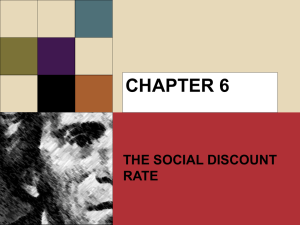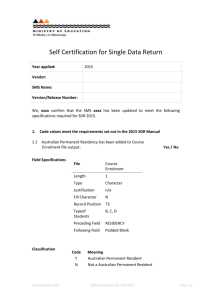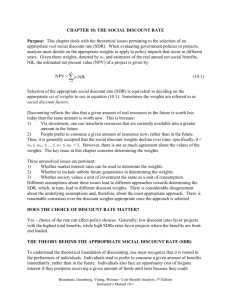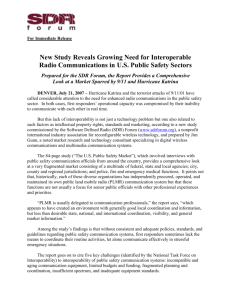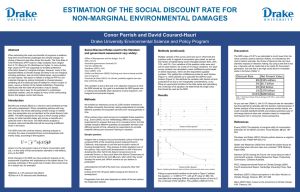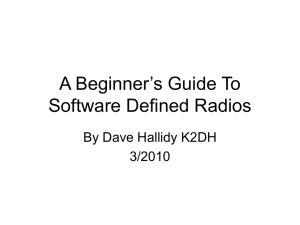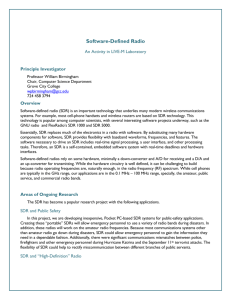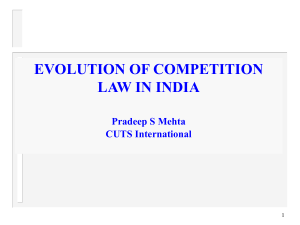Document
advertisement
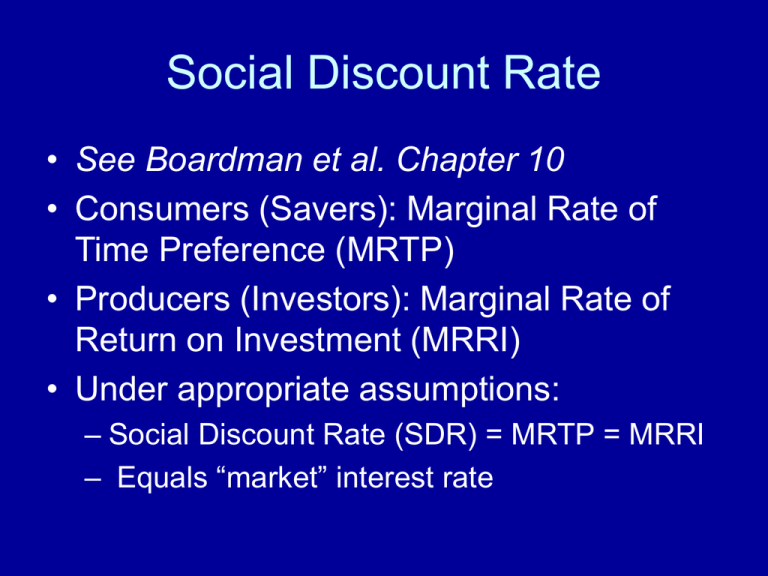
Social Discount Rate • See Boardman et al. Chapter 10 • Consumers (Savers): Marginal Rate of Time Preference (MRTP) • Producers (Investors): Marginal Rate of Return on Investment (MRRI) • Under appropriate assumptions: – Social Discount Rate (SDR) = MRTP = MRRI – Equals “market” interest rate Consumers-Savers “budget line” – shows combinations of current consumption and savings. Slope = -i X1 x1 x0 At x0: MRTP = i I0 I1 X0 Producers-Investors X1 “PPF”: future production possibilities with current savings x1 At x1: MRRI = i “income line”: shows all combinations of current and future expenditures equal to a specific level of current income x0 X0 Slope =equilibrium interest rate X1 I0 S0 Demand for investment > supply of savings I1=S1 X0 Social Discount Rate But in reality not a single interest rate for all savers and investors • Many factors affect interest rates. • What factors? – – – – – – Transactions costs Differences in risks Different time horizons Expectations of future - inflation Policies – controls on interest rates Direct interventions in credit markets – Federal Reserve Bank (0pen market operations) Transactions Costs Transactions Costs of Financial Intermediation r Si Ss ri’ ri Costs of intermediation rs’ rs New project increases investment demand Di’ Di ∆I ∆S ∆K K Blended Rate • Capital for project is combination of additional savings and reduced investment in private sector (crowding out) • ∆K = ∆S - ∆I • SDR = (∆S/∆K)*rs + (∆I/∆K)*ri – Harberger: Empirical studies show savings rates insensitive to interest rates (S/ r 0), so ∆S 0 – SDR ri = MRRI Ss = SI r ri’ ri rs Di Ds ∆I = ∆K ∆S = 0 K “Small” Investments • In the previous examples, we have examined the effects of “large” investments • The amount of capital needed for the new investment is enough to affect market interest rates • But many investments are not so big, will not affect interest rates – For these scale of investments, the supply of savings may be considered to be perfectly elastic r ri Si rs Ss Di ∆S = ∆K ∆I = 0 K “Small” Investments • • • • • ∆K = ∆S - ∆I SDR = (∆S/∆K)*rs + (∆I/∆K)*ri But now ∆I = 0 SDR = rs So, for “Small” investments, the social opportunity cost of capital should be consumers marginal rate of time preference (MRTP), which is < MRRI
